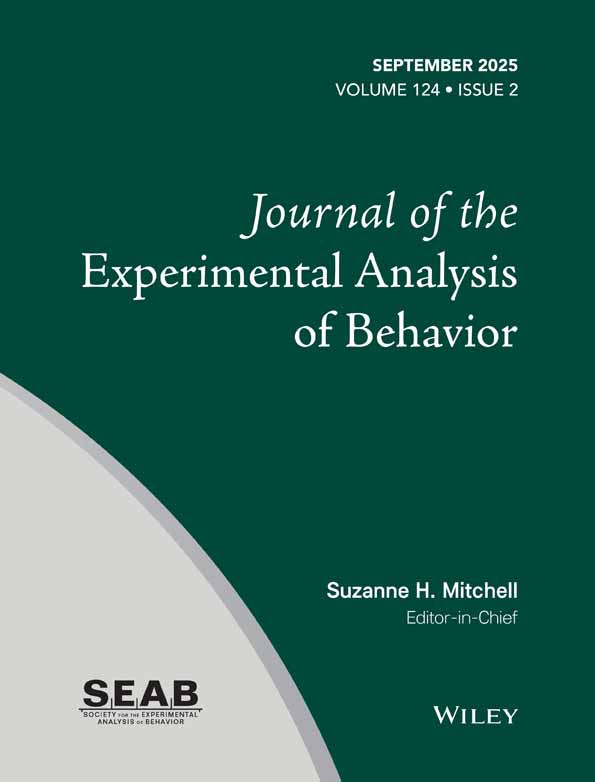GENERALIZATION OF A TACTILE STIMULUS IN HORSES
Abstract
Using horses, we investigated the control of operant behavior by a tactile stimulus (the training stimulus) and the generalization of behavior to six other similar test stimuli. In a stall, the experimenters mounted a response panel in the doorway. Located on this panel were a response lever and a grain dispenser. The experimenters secured a tactile-stimulus belt to the horse's back. The stimulus belt was constructed by mounting seven solenoids along a piece of burlap in a manner that allowed each to provide the delivery of a tactile stimulus, a repetitive light tapping, at different locations (spaced 10.0 cm apart) along the horse's back. Two preliminary steps were necessary before generalization testing: training a measurable response (lip pressing) and training on several reinforcement schedules in the presence of a training stimulus (tapping by one of the solenoids). We then gave each horse two generalization test sessions. Results indicated that the horses' behavior was effectively controlled by the training stimulus. Horses made the greatest number of responses to the training stimulus, and the tendency to respond to the other test stimuli diminished as the stimuli became farther away from the training stimulus. These findings are discussed in the context of behavioral principles and their relevance to the training of horses.




